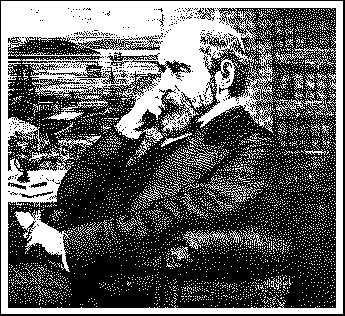
. Beyond much question, the idea was identified with H.G. The legislative leader, L. L. Dennett of Modesto, got the idea from his father, an old neighbour of H.G. in San Francisco. In Modesto and Turlock, "The campaign was conducted on pure Single Tax lines" In 1917, the California Legislature made it mandatory for all Districts to exempt improvements (Stat. 1917: 764, codified Stats. 1943, Ch. 368, Div. 10,11 [California Water Codel:). They then grew to include over four million acres by 1927, and to dominate American agriculture in their specialty crops. They built the highest dam in the world at that time (Don Pedro, on the Tuolumne River in the Sierra Nevada), financing it 100% from local site rents.
Albert Henley, a Iawyer who crafted the modified District that serves metropolitan San Jose, evaluated them thus:
"The discovery of the legal formula of these organizations was of infinitely greater value to California than the discovery of gold a generation before. They are an extraordinarily potent engine for the creation of wealth." (Henley, 1957: 665, 667; 1969: 140)They catapaulted California into being the top-producing farm state in the Union, using land that was previously desert or range. They made California a generator of farm jobs and homes, while other states were destroying them by latifundiazation. (This was while the rest of America suffered in the Great Depression!)
Tf this is a `minor' phenomenon it is because the neglect of historians and economists has made it so. One searches in vain through academic books and journals on farm economics for recognition of this, the most spectacularly successful story of farm economic development in history. What references there are consist of precautionarv cluckings focused on attendant errors and failures. 'Economic development' theorists neglect it altogether, as though California"s commercial farming had sprung full blown from a corporate office, with no grass roots basis, and no development period.
It is as though the clerisy were in conspiracy against the demos, under some Trappist oath against disclosing what groups of small people achieved through community action, and through the judicious application of the pro-incentive power of public site rentals.
Condensed from The Corruption of Economics by Mason Gaffney & Fred Harrison. London 1994
From the Roman Latifundi "Great Estates", identified as the ultimate cause of the collapse of the Roman Empire, these were immense private estates in Italy farmed by slaves and owned by the senators and wealthy citizens of Rome, which consumed far more than they produced, and shut out the majority of the populace from access to land on which to live, farm or otherwise work for a living, leading to great discontent, unemployment, poverty and lack of loyalty to the system of government in Rome itself. Only the rich had any interest in maintaining things as they were. (Sound familiar?:) Click the picture below to return to Home Page

 Go to the RainForest GeoCities
Go to the RainForest GeoCities